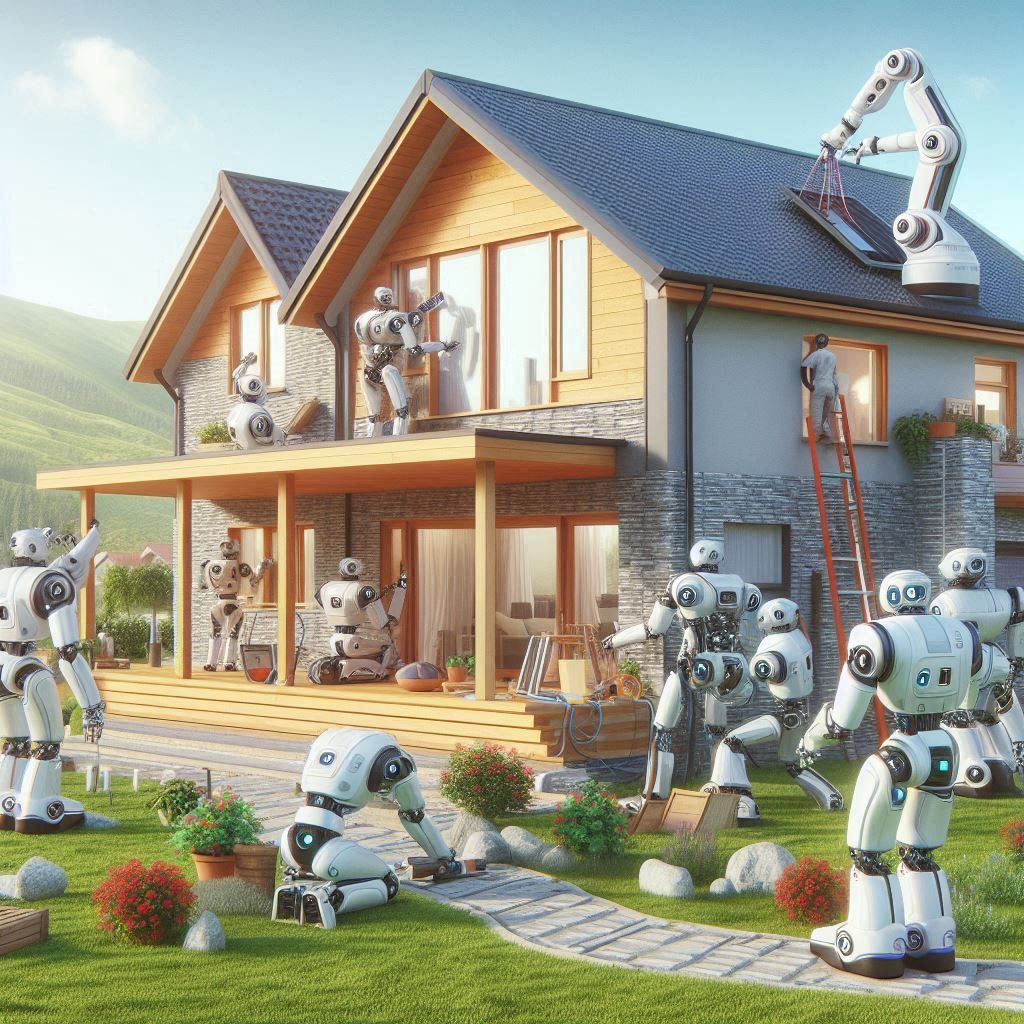Last week, reader JS wrote in with the following:
I noticed that Construction Services is one of the areas the least hard hit. I guess they still need people to build those on-site houses and buildings that cost so much. I wonder if we are going to see people settle more for prefab houses, and do you think AI and robotics will bring down the cost of those houses and buildings. What companies do you think will be involved?
Is this a potential investment area?
That’s a lot to unpack, so let’s get into it. Because JS is locked in on something that a lot of analysts have missed.
While many sectors have been laying off workers and cutting back on new hires due to advances in AI, construction faces the opposite problem…
There aren’t enough workers, and there doesn’t seem to be enough innovation.
According to a 2017 McKinsey report, the U.S. construction industry has a $1.6 trillion productivity gap compared to more automated sectors like manufacturing.
And the average price of a new home has jumped around 22% since 2020, thanks in part to labor shortages and rising material costs.
If ever there was an industry begging to be disrupted by prefab, AI and robotics…
This is it.
But are we really on the verge of a construction revolution?
The New Prefab
For many, the word “prefab” conjures up images of flimsy trailers or boxy starter homes with bad plumbing and zero character.
But the new generation of prefab is very different.
Companies like Veev, Aro Homes and Intelligent City are combining modular design with precision robotics, AI-based layout tools and sustainable materials to create homes that are faster to build…
But often better built than the ones going up on your average suburban lot.
Veev claims it can build homes up to four times faster than traditional methods while producing near-zero waste.
The company uses AI to automate most of the building design process, including mechanical and plumbing. Ideally, it can complete a finished home in under 30 days, from permit to delivery.
Aro Homes is another builder that integrates software and data-driven tools, from upfront site analysis to the use of a 3D ‘digital twin’ that supports design iteration.
By pairing human-led design talent with engineering precision, Aro turns homebuilding into a high-tech operation.
Intelligent City, which specializes in prefabricated mass timber buildings, also uses AI software to design its projects and optimize them for efficiency and sustainability.
And we aren’t talking about cheap starter homes.
Aro and Intelligent City both focus on mid- to high-end homes with real architectural flair.
Source: aro.homes
As you can see… prefab doesn’t have to mean boring.
But manufacturing only covers part of the equation in the world of construction.
There’s still a lot of work that happens onsite, like digging, laying bricks and pouring foundations.
That’s where Built Robotics comes in.
The company turns ordinary excavators and bulldozers into smart machines using its plug-and-play automation kit called the “Exosystem.”
Once installed, these rigs can dig, trench and grade without a human in the cab. And they’re already being used on projects across the U.S. by major contractors like Mortenson and Black & Veatch.
Robots like these can run longer hours and maintain consistent output, which can help shave serious time off site prep.
In the right setting, they could reduce the time needed to prepare a construction site by up to 50%… or even more.
Then there’s FBR (ASX: FBR)’s Hadrian X, an Australian-developed bricklaying robot that can potentially set up to 1,000 bricks an hour.
That’s about 10 times faster than a human, without needing water breaks or health insurance.
PulteGroup (NYSE: PHM), one of the largest homebuilders in the country, even ran a pilot in Texas last year using robotic systems on prefab modules.
According to internal estimates, that test reduced total construction time by nearly 30%.
That’s why I believe we’ll start seeing a lot more robots being used in construction in new and exciting ways.
Of course, robots won’t replace every job on a site.
But in a world where the average construction worker is around 42 years old and thousands are retiring each month, robotics could be a key productivity driver for the industry.
But all of this — modular components, robotic labor and digital planning — could soon rely on a growing layer of artificial intelligence that acts like the digital foreman.
There are already real-world monitoring platforms like Trimble that help automate project scheduling, cost control and risk assessment.
Meanwhile, drones and smart cameras are scanning jobsites today and comparing them to the digital building plans so they can flag mistakes before they get locked in.
And AI analytics tools like Buildots even track progress across multiple job sites, which could cut delays by up to 50%.
In other words, AI is already being integrated into the construction industry…
Even if most people aren’t aware that it’s happening.
Here’s My Take
To answer reader JS: Yes, we still need people to build houses.
But both the houses being built and the crews building them could start to look a lot different in the near future.
We’re still in the early stages of the modernization of the construction industry, but a mix of prefab, AI and robotics could finally crack the housing crisis.
And I don’t believe this will equate to “settling” for the folks who purchase these new modern homes.
What’s more, the application of AI and robotics has the potential to turn construction into a high-tech growth story…
And that’s something I’ll be keeping an eye on for future investment opportunities.
Regards,
Ian King
Chief Strategist, Banyan Hill Publishing
Editor’s Note: We’d love to hear from you!
If you want to share your thoughts or suggestions about the Daily Disruptor, or if there are any specific topics you’d like us to cover, just send an email to [email protected].
Don’t worry, we won’t reveal your full name in the event we publish a response.
So feel free to comment away!
Disclaimer: This story is auto-aggregated by a computer program and has not been created or edited by finopulse.
Publisher: Source link








